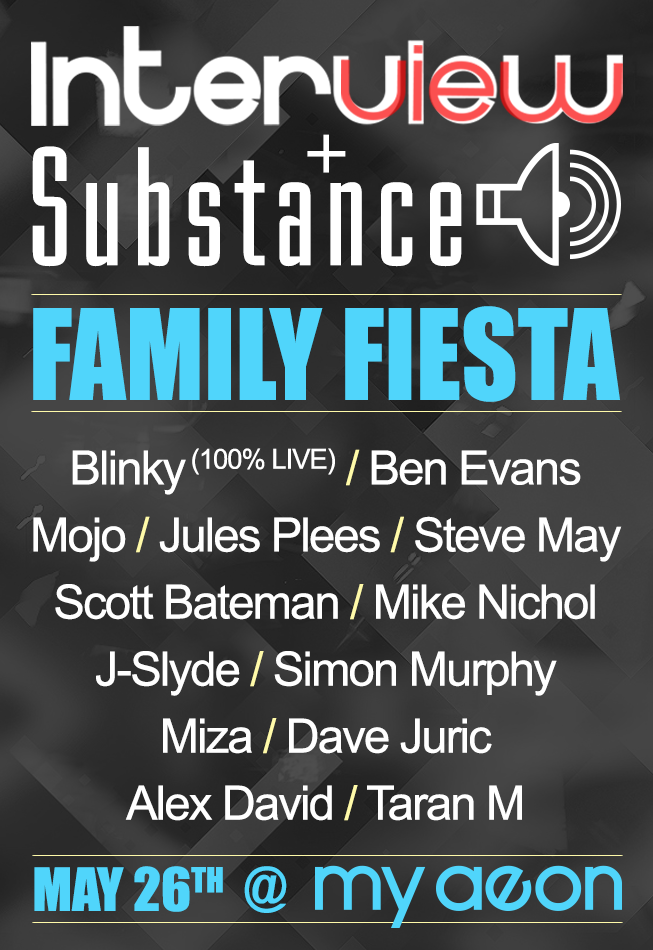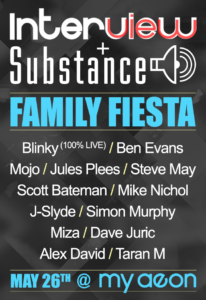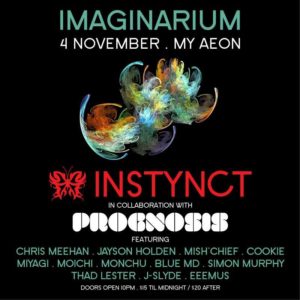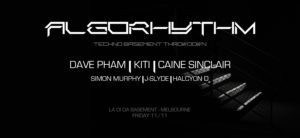by Taran M
The internet was inevitably the Trojan horse of the music world. The unknown steed was wheeled slowly into the fort of the music fraternity, mystified by this technological gift, speculative about its power, amazed by the sheer beauty of its concept and above all ready to exploit the power that lay before them. Unfortunately what lay inside that was given to the secure guarded palms of the music industry was the very thing that would reshape it forever. In June 1999 the beast slay the confines of the walls and revolutionised the consumption of the musical world. From here in the metaphor ceases and so did the sure-shot multi-billion dollar industry we here on planet Girth call…music.
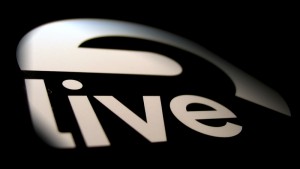 Napster turkey slapped the music industry, slept with its sister and then defecated on its parent’s bed and introduced itself as the arsehole “Johnny Rotten” Boyfriend of a virginal industry that had never really been threatened. Sure record companies had been competing against themselves for sales, signings and strength. But now they were all challenged by their own product, their own sales had turned around to them, repacked themselves and gone AWOL. It’s the equivalent of the Navy Seal team storming Bin Laden’s safe house, kidnapping him to the outer regions of Mongolia and demanding a ransom. How would Barack Obama deal with this, he’d “kill em all” and that’s exactly what the major record labels did.
Napster turkey slapped the music industry, slept with its sister and then defecated on its parent’s bed and introduced itself as the arsehole “Johnny Rotten” Boyfriend of a virginal industry that had never really been threatened. Sure record companies had been competing against themselves for sales, signings and strength. But now they were all challenged by their own product, their own sales had turned around to them, repacked themselves and gone AWOL. It’s the equivalent of the Navy Seal team storming Bin Laden’s safe house, kidnapping him to the outer regions of Mongolia and demanding a ransom. How would Barack Obama deal with this, he’d “kill em all” and that’s exactly what the major record labels did.
The “I disappear” fiasco which triggered Metallica’s famous court case against Napster, subsequently initiating hundreds of others, gave us the very clear reality of what was at stake, more importantly what we sometimes fail to see with peer to peer sharing. While the reaction from the public was especially skeptical of a multi-million dollar band complaining about losing a few thousand sales, Metallica was not just drawing a line for themselves, but for the other bands or producers that they supported. For every major label success, there are six failures. Bands that get a record deal get forwarded $60K to make their record and more often than not, fail to meet sales expectations over three albums. Three albums times $60k is a lot of money for producers and bands to recoup when they’re earning roughly $2 per album sold. So to appreciate exactly why Napster became the target of nearly every record label and most bands is understandable. Napster is great for free exposure, but I would never base a foundation of a music career on the basis of peer to peer websites if I was an unsigned artist.
 Napster cut the wound and for a time the wound was stitched. Record labels realised however the imminent threat. When Napster went to a paid website, the whole medium of how music could and should be distributed by record labels entered into a whole new realm. The effect on this especially rippled through the dance scene. Music consumption has developed considerably since the late 90’s through to today by a combination of the way music is played and how it is purchased. It’s funny to think that the cutting edge of dance music, the new technological revolution, up until about 2004 was banged out with a device originally conceived in the late 19th century, the humble turntable. As 2005 hit the CDJ cut the swathe through the electronic scene, tearing through the rotary drive denon CD players like the sword named Excalibur. Suddenly in no less than six years, turntables are an “Analogue clock in a digital age” to quote George Clooney in Oceans 11. DJ’s no longer carry 300,000kgs of vinyl that they might play, or not. The advent of the latest Pioneer CDJ’s allows the DJ to wander into the club with two USB’s (If he has enough faith). Macbook, Serato, Ableton, Traktor, Dongles and APC controllers now litter the dance scene, the humble Technics 1200 is sitting at the unemployment line or the pension office muttering its jaded diatribe “The scene has changed man” or “It’s not like how it used to be in the olden days”. Yes the discontinued 1200 is now eating cat food, wandering around the pub and hoping that number 6 in race 3 at Randwick is going to pull through, just so it can buy some budget steak for dinner. In short it’s dead and technology is the box they are going to bury it in.
Napster cut the wound and for a time the wound was stitched. Record labels realised however the imminent threat. When Napster went to a paid website, the whole medium of how music could and should be distributed by record labels entered into a whole new realm. The effect on this especially rippled through the dance scene. Music consumption has developed considerably since the late 90’s through to today by a combination of the way music is played and how it is purchased. It’s funny to think that the cutting edge of dance music, the new technological revolution, up until about 2004 was banged out with a device originally conceived in the late 19th century, the humble turntable. As 2005 hit the CDJ cut the swathe through the electronic scene, tearing through the rotary drive denon CD players like the sword named Excalibur. Suddenly in no less than six years, turntables are an “Analogue clock in a digital age” to quote George Clooney in Oceans 11. DJ’s no longer carry 300,000kgs of vinyl that they might play, or not. The advent of the latest Pioneer CDJ’s allows the DJ to wander into the club with two USB’s (If he has enough faith). Macbook, Serato, Ableton, Traktor, Dongles and APC controllers now litter the dance scene, the humble Technics 1200 is sitting at the unemployment line or the pension office muttering its jaded diatribe “The scene has changed man” or “It’s not like how it used to be in the olden days”. Yes the discontinued 1200 is now eating cat food, wandering around the pub and hoping that number 6 in race 3 at Randwick is going to pull through, just so it can buy some budget steak for dinner. In short it’s dead and technology is the box they are going to bury it in.
With all these advents in technology of course the way users and abusers of music purchase tracks is going to change. After its initial inception in 2004 and then re-release in 2007, Beatport opened…….. a port…… to true online music purchasing for the dance music scene. There was no more shipping, no more waiting for that Aust Post slip to say tracks had arrived. The whole art of relic hunting for the likes of 5:55 by Durango was gone.
 With every action there is a reaction of course and as Beatport inspired others to do the same, major dance labels stopped pressing as much vinyl and their stores evolved into online digital download stores. Slowly but surely the likes of Vinyl Warning shut up shop, focusing on equipment only. Beatport’s inception, and the digital age in general, inspired Producers to not look for a major label to support their quest for promotion and fame. If you can hook onto Beatport, or any of the boutique labels our production talents can be wormed all the way through the world. Just think right now DJ Novi Stoalstarki from the small nation of the Ukraine could be banging out Blinky’s “Kiss not a Kiss” or any number of Kalus’s tunes to a bedroom crowd, to 800 people at the “Capitol to Central” (I hear it is Moldova’s biggest nightclub) or to himself as he hunts down wild game with a rusty coat hanger and a picture of Jennifer Love Hewitt. The fact is that this Digital sphere has harnessed the world of electronica and shortened the very big distance that needs to be covered by producers in Australia. Australian artists like Steve May, Blinky and NFX have their tunes played by the likes of Tiesto, Dubfire, D-Nox and Beckers and maybe even DJ Novi Stoalstarki (If he even exists) and for them I know personally this is extremely humbling.
With every action there is a reaction of course and as Beatport inspired others to do the same, major dance labels stopped pressing as much vinyl and their stores evolved into online digital download stores. Slowly but surely the likes of Vinyl Warning shut up shop, focusing on equipment only. Beatport’s inception, and the digital age in general, inspired Producers to not look for a major label to support their quest for promotion and fame. If you can hook onto Beatport, or any of the boutique labels our production talents can be wormed all the way through the world. Just think right now DJ Novi Stoalstarki from the small nation of the Ukraine could be banging out Blinky’s “Kiss not a Kiss” or any number of Kalus’s tunes to a bedroom crowd, to 800 people at the “Capitol to Central” (I hear it is Moldova’s biggest nightclub) or to himself as he hunts down wild game with a rusty coat hanger and a picture of Jennifer Love Hewitt. The fact is that this Digital sphere has harnessed the world of electronica and shortened the very big distance that needs to be covered by producers in Australia. Australian artists like Steve May, Blinky and NFX have their tunes played by the likes of Tiesto, Dubfire, D-Nox and Beckers and maybe even DJ Novi Stoalstarki (If he even exists) and for them I know personally this is extremely humbling.
The other effect of this last five years has been the closure and the slimming down by major labels in the dance scene due to technological advances. As I mentioned before producers are able to farm their tunes off to boutique labels on Beatport and if marketed right can expect some degree’s of royalty payments. The major labels are no longer the shark in the pond, just a slightly larger fish in an ever expanding sea. Two weeks ago Kevin Energy announced the subsequent closure of the “Nu energy Collective” sighting all of the above as explanations for the dwindling sales. For those that don’t know of Nu energy, they have been strong in the Hard dance, free-form and Happy hard scene for over 15 years. There are more to come in both the electro, hard dance and tech scene’s, that I know of personally. The big cause again comes down in part to that ugly beast, that we all love and use… Peer to peer sharing.
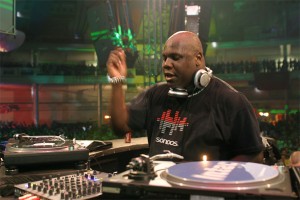 I really wonder if the whole torrent thing is a backlash by people who think the music and now motion picture industry are just greedy. Peer to Peer sharing has never been so out of control and don’t ho and hum, unless your brethren or you haven’t looked at a PC since 1985 you have illegally downloaded something. Everybody wants something for as next to nothing as they can get it. With torrenting as rampant as planking at the moment I guess we can’t really tell what is going to happen next. I guess for the best part that is why they call the future the unknown. I’m sure if you told Carl Cox ten years ago that one day his set would just comprise of him playing solitaire and Ableton instead of working up a sweat with three turntables, he might have a heart attack. But that’s the way it goes, who knows what is going to happen next? We just might have to brace ourselves for some pretty interesting developments as the life of dance music continues to embrace adulthood.
I really wonder if the whole torrent thing is a backlash by people who think the music and now motion picture industry are just greedy. Peer to Peer sharing has never been so out of control and don’t ho and hum, unless your brethren or you haven’t looked at a PC since 1985 you have illegally downloaded something. Everybody wants something for as next to nothing as they can get it. With torrenting as rampant as planking at the moment I guess we can’t really tell what is going to happen next. I guess for the best part that is why they call the future the unknown. I’m sure if you told Carl Cox ten years ago that one day his set would just comprise of him playing solitaire and Ableton instead of working up a sweat with three turntables, he might have a heart attack. But that’s the way it goes, who knows what is going to happen next? We just might have to brace ourselves for some pretty interesting developments as the life of dance music continues to embrace adulthood.

